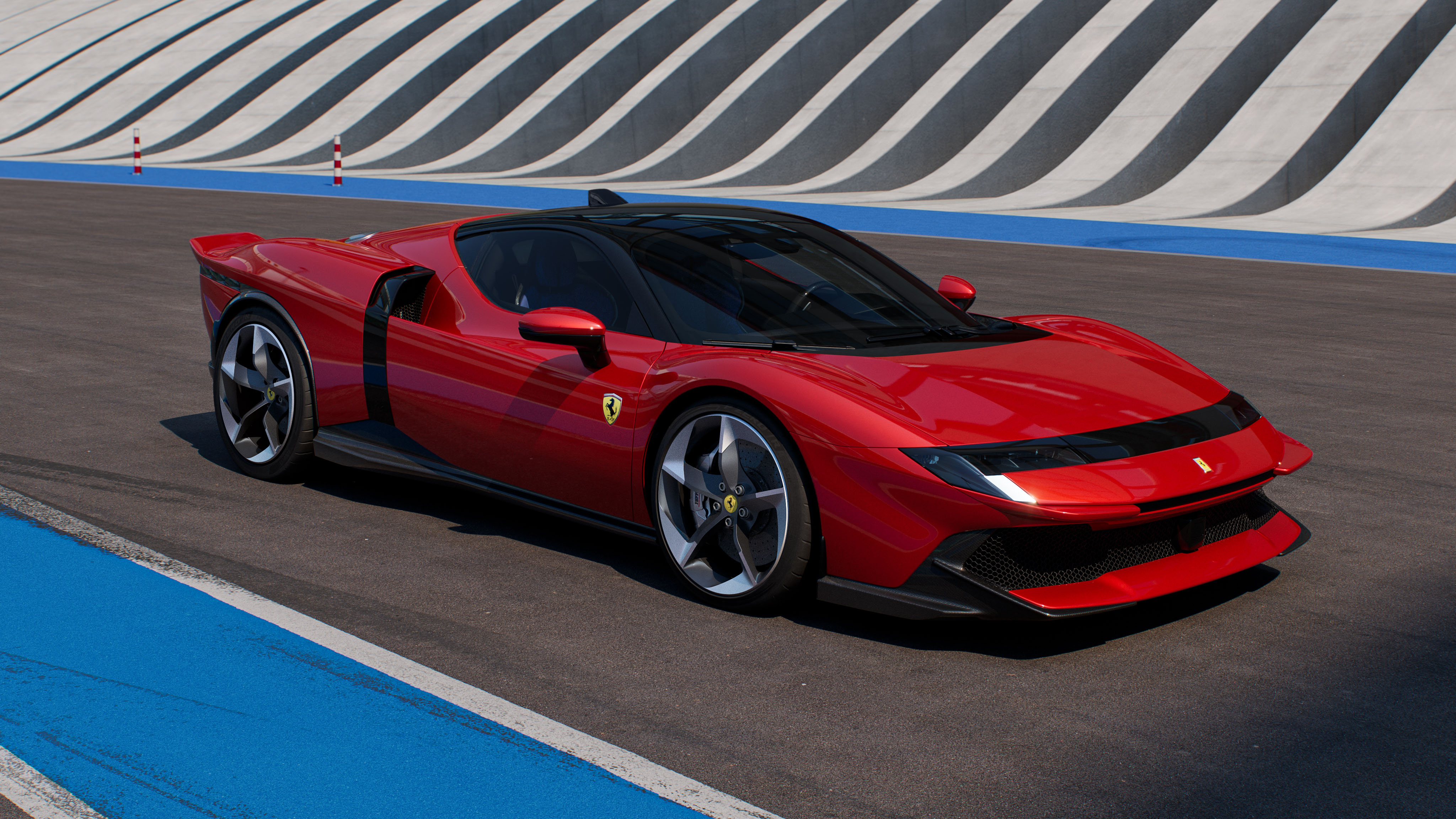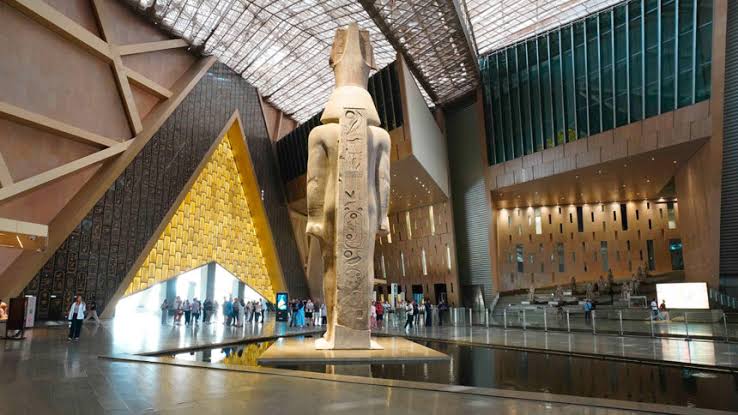The Legend Returns: Ferrari Unleashes New Testarossa, a 1,036bhp Hybrid Monster

The highly anticipated 2027 Ferrari 849 Testarossa marks the return of a legendary nameplate, serving as a significant evolution and replacement for the Ferrari SF90. While at its core it can be considered an ‘SF90 Evo’ due to shared fundamental hardware, Ferrari has implemented a relentless application of marginal gains and substantial upgrades to distinguish it. This new mid-engine, all-wheel-drive plug-in hybrid supercar represents the pinnacle of performance offered in Ferrari's standard production line, positioning itself just below exclusive pinnacle models like the Daytona SP3.
The 'Testarossa' name itself carries a rich history. Originating from the 'Testa Rosa' (Italian for 'red head') of the 1950s 500 TR race car, referring to its distinctive red valve covers, it later graced iconic models like the 1984 Testarossa and the victorious 250 Testa Rossa race car, which famously won the 24 Hours of Le Mans multiple times. The '849' designation for the new model refers to its eight cylinders and the 49 cubic centimeters of displacement per cylinder, totaling 4.0 liters. However, unlike its 1980s namesake, the 2027 Testarossa unapologetically looks towards the future, with minimal visual nods to its '80s predecessor, which may divide enthusiasts.
At the heart of the 849 Testarossa is a sophisticated plug-in hybrid powertrain. It utilizes the same 4.0-liter twin-turbo V8 engine, now bolstered by three electric motors – two assisting the front axle and one supporting the rear – enabling both all-wheel-drive and advanced torque-vectoring. The internal combustion engine has seen a significant boost, now producing 819 hp at 7,500 rpm (up from the SF90's 769 hp) and 621 lb-ft of torque at 6,500 rpm. With the electric motors, limited by a 7.45kWh lithium-ion battery to 217bhp, the total system output climbs to a staggering 1,035 horsepower, surpassing the SF90’s 986 hp. These gains are achieved through larger turbos with low-friction bearings from the F80, chunkier intercoolers, new cylinder heads, a different engine block, revised intake plenums, valvetrain, and fuel rail. Titanium fastenings and components from the 296 GT3 ensure that despite the added complexity and power, the 849 Testarossa maintains the same curb weight as the SF90.
Power is channeled through an eight-speed F1-style paddleshifted dual-clutch automatic gearbox, purportedly faster and more refined than ever before, with improved shifting calibration and a more sonorous exhaust note. The performance figures are truly neck-breaking: 0-62 mph (0-100 kph) in a claimed 2.25 seconds, and 0-124 mph in just 6.3 seconds. MotorTrend estimates an even quicker 0-60 mph time of 2.0 seconds. The car boasts a top speed of 205 mph and has already posted a Fiorano lap time of 1 minute 17.5 seconds, making it about 1.5 seconds faster than the SF90 and a mere fifth of a second off the SF90 XX.
Beyond raw power, the Testarossa integrates an array of advanced electronic aids to manage its immense output and enhance driving dynamics. These include Side Slip Control version 9.0, advanced traction control, eDiff, SCM, FDE 2.0 EPS, and ABS Evo. A particularly innovative feature is FIVE (Ferrari Integrated Vehicle Estimator), an estimation system that models dynamic behavior in real-time, creating a digital twin of the car to predict driver intent and adjust systems like torque vectoring and braking distribution for optimal performance and predictability. The car also features significantly improved cooling, requiring 15 percent more than the SF90, and generates 415kg of downforce at 155 mph, an increase of 25kg. Notably, above 130 mph, the car transitions to rear-wheel drive only. A nose-lift system, a feature not previously available on the SF90 Assetto Fiorano, is now standard across all Testarossa models, helping owners navigate everyday obstacles.
The exterior design of the 849 Testarossa is both confident and divisive. While some elements recall the F80, Daytona, or even the 308, it ultimately presents a contemporary Ferrari aesthetic with strong aerodynamic influence. The front is double-tiered with distinctive aero flicks and a black horizontal mask housing the headlights, giving it a modern, familial look. The side profile features a deep channel carved into the door top, crucial for feeding air to the larger intercoolers necessitated by the increased power. The most striking design element is arguably the 'twin-tail' rear, featuring pontoon-like arches that flow into a pair of static winglets (technically part of the rear bumper), supplemented by an active central spoiler section. This rear design, inspired by the 1970 Ferrari 512 S race car, with its three spoilers, is described by Chief Design Officer Flavio Manzoni as a game-changer and gives the car a much more assertive attitude than its predecessor.
Inside, the cabin is refreshed, comfortable, and pared back, designed for a focused high-performance experience. Key ergonomic improvements include a proper start button and switches on the steering wheel, along with functional haptics on the binnacle's bottom sides. Despite its supercar capabilities, Ferrari claims the 849 Testarossa offers a surprising degree of comfort and daily drivability, including a 25km pure electric range, allowing for more relaxed cruising. This effort to make it a “more accessible supercar” is partly attributed to the predictive capabilities of the FIVE system.
The 849 Testarossa is available as both a Coupe and a Spider, with the latter featuring a folding metal hardtop and incurring a 90kg weight penalty. For those seeking the ultimate track-focused experience, the Assetto Fiorano package is offered for both body styles. This package includes more aggressive nose flicks and double-height twin-tail elements, racy single-phase Multimatic suspension (now with nose lift), a 30kg weight reduction thanks to extensive carbon fiber components (including wheels and lightweight tubular seats), and specific Michelin Cup2 tires. Base pricing for the Coupe is approximately €460,000, and €500,000 for the Spider, with the Assetto Fiorano package adding around €52,500.
With other plug-in hybrid supercars like the Lamborghini Revuelto and the Aston Martin Valhalla entering the market, the 2027 Ferrari 849 Testarossa enters a competitive landscape. While it serves as a meaningful update to a proven formula, pushing the boundaries of performance and technology, its success in inspiring the same wonder and becoming a style icon like its predecessors remains to be seen. The Testarossa is scheduled to go on sale in April 2026 for the Coupe and July 2026 for the Spider.
You may also like...
Time Wealth: The Real Currency Everyone’s Now Chasing

In a world obsessed with hustle, “time wealth” has become the real luxury. This in-depth lifestyle feature explores ...
Food for the Mind: How Diet Shapes Mental Health More Than We Think

What we eat affects more than our bodies, it shapes our emotions, focus, and resilience. This feature talks on how diet ...
The End of Minimalism: Why We’re Choosing Meaning Over Aesthetic

A cultural shift is redefining modern living: Minimalism is fading, and “Meaningism” is rising, a movement that values c...
Sleep Deprivation: Africa’s Most Overlooked Health Epidemic

Sleep deprivation is quietly sweeping across Africa, undermining health, productivity and well-being. Different lifesty...
The Next Big Discovery Might Be Growing in Someone’s Backyard

Hidden in gardens, local farms, and village backyards across Africa and beyond, the next major scientific breakthroughs ...
The Grand Egyptian Museum: Re-Engineered History of Africa.

2002 was the genesis of a dream. Egypt opens its Grand Museum in 4days.
NanoFilter: The Tanzanian Invention Turning Dirty Water into Life

Read on how Dr. Askwar Hilonga’s NanoFilter, a Tanzanian nanotech invention, is transforming access to safe drinking w...
The Myth of the Strong African Mother

Parenting burnout is becoming an unspoken crisis among African mothers. The pressures of motherhood, cultural expectatio...